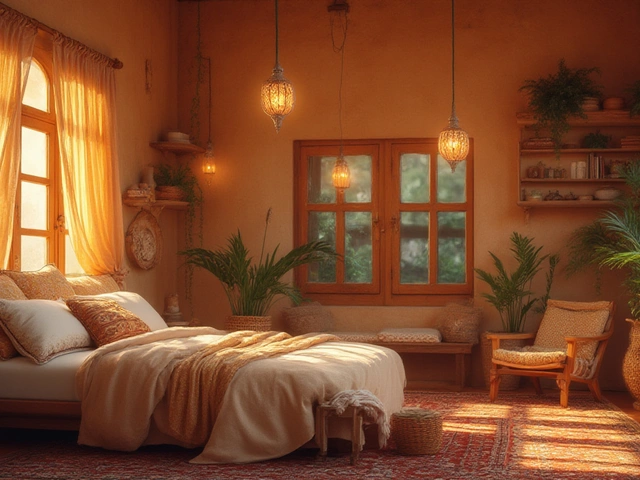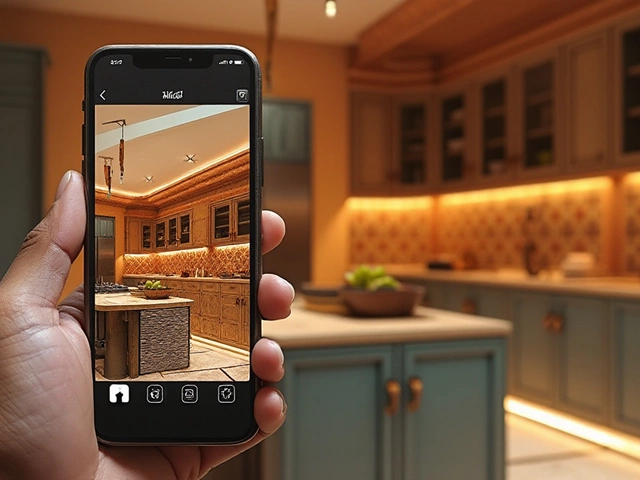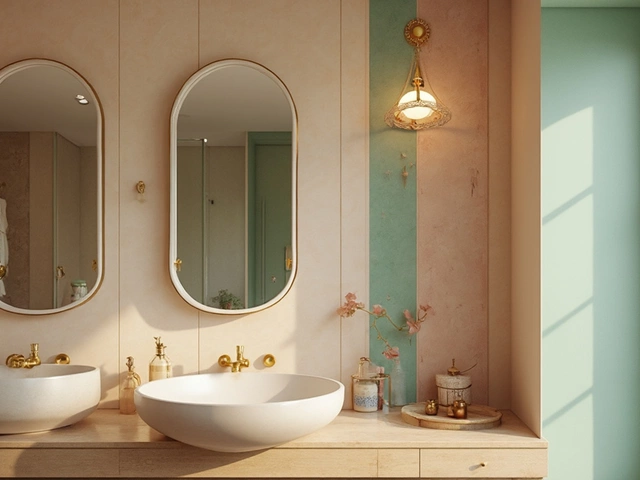No one ever says, "I’ve got too much storage at home." If your closets are stuffed and your kitchen shelves look like a game of Jenga, you’re definitely not alone. Finding more storage space doesn’t always mean you need to build an addition or rent a storage unit. You can do a lot with what you already have—sometimes you just need to look at your space a bit differently.
Start by thinking about your daily pain points. Is it shoes piling up at your entryway? Or maybe it’s kitchen gadgets taking over every inch of counter space. Tackling these specific trouble spots makes a big difference right away. Even if your home is small, there’s usually untapped potential hiding under beds, behind doors, or high up on unused walls. With a little planning, you can make it feel like your home grew a few extra closets overnight.
- Why You Need More Storage
- Declutter Before You Add
- Creative Storage Hacks
- Room-by-Room Solutions
- Low-Cost Upgrades and DIY Tips
Why You Need More Storage
Stuff has a way of multiplying when you’re not looking. According to the National Association of Professional Organizers, the average American home has more than 300,000 items. Yikes, right? No wonder even bigger homes can feel cramped if there’s not enough storage.
Running out of space does more than just cramp your style. Clutter pops up fast, making it tough to find things you actually need—like that spare phone charger or your dog’s leash. When your home is disorganized, you lose time hunting for stuff, and stress goes up. A 2016 study from UCLA found that women who described their homes as cluttered showed higher levels of cortisol, a stress hormone. No one needs that in their life.
Besides stress, the lack of organization can cost you money. It’s easy to buy doubles of things you already have but can’t find. Ever picked up another tape measure because you couldn’t spot the one hiding at the back of a drawer? You’re not alone. Plus, homes with better home storage solutions often look bigger, neater, and make day-to-day life easier.
Here’s what happens once you boost your home’s storage:
- You actually know where your stuff is (finally).
- Cleaning becomes way faster—less clutter to move around.
- Every bit of your home starts to work for you, not against you.
If you want more space, more peace of mind, and a shot at never tripping over shoes again, thinking about smarter storage is the way forward.
Declutter Before You Add
Adding more storage works best when you’re not storing a bunch of stuff you never use. Before you even think about shelves or bins, clear out things you haven’t touched in ages. You’d be surprised how much space shows up when you ditch what’s just taking up room.
Most experts recommend the one-year rule: if you haven’t used something in the last year, chances are you can let it go. That old blender in the kitchen? Or that pile of sweaters you haven’t worn since high school? They’re not doing you any favors, so give them away, sell them, or toss them if nobody needs them.
- Start one area at a time. Trying to declutter the whole house at once can get overwhelming. Pick a closet, drawer, or shelf and go through it piece by piece.
- Sort your stuff into three piles: keep, donate, and toss. Be honest, especially with things like kitchen gadgets and expired snacks that can fill up home storage fast.
- Use clear bins for stuff you’re keeping. You’ll see what’s inside—no more mystery boxes at the back of the closet.
If you want proof this makes a difference, a 2022 study found that people who decluttered their homes used 37% less space for the same type of items. That opens up more room without spending a dime on new storage furniture.
If you’ve got sentimental stuff, take a picture before letting it go. It works for old kids’ artwork or trophies. This trick helped me when I had to get rid of the dog toys Max had destroyed but still looked cute in a photo.
When you’re done, you’ll know exactly what needs a new home—so all your new organization ideas actually work.
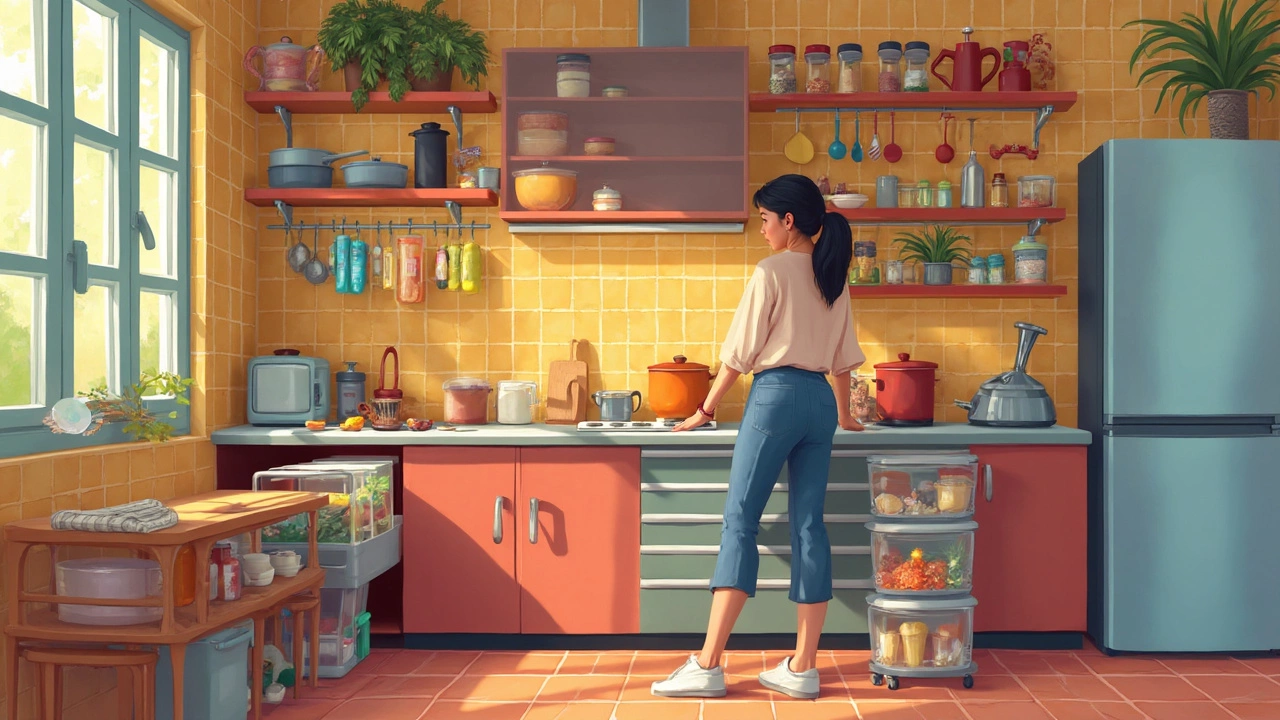
Creative Storage Hacks
Alright, let’s get hands-on. Most homes secretly hold more storage space than you’d expect. You just have to spot the gaps. I’ve found little changes can open up way more room—often without picking up a hammer or splashing much cash.
Start with your walls. Vertical space is gold if you need organization. Floating shelves aren’t just for books and plants; think about lining the wall above doorframes or tucking a couple in dead corners. It’s also worth using hooks behind every door—bathrooms, bedrooms, the kitchen pantry. I hang Max’s leashes by the front door. Easy grab-and-go (plus it keeps things tidy).
Let’s talk beds. Underbed bins aren’t just for old shoes. Bags, winter clothes, and even spare electronics fit down there. Choose bins with wheels, so you’re not fighting dust bunnies every time you pull them out. For anyone short on closet space, consider bed frames with built-in drawers. IKEA’s MALM and BRIMNES series are favorites for a reason—they get rave reviews for adding serious home storage.
Kitchens always become chaos, don’t they? Use tiered organizers inside cabinets so small jars aren’t lost in the back. Install a tension rod under your sink; it’s a trick from pro organizers for hanging cleaning spray bottles. Magnetic strips can line backsplash areas or even the inside of cabinet doors for knives and metal utensils. It’s not only a great shelving hack, but keeps things safe and easy to spot.
Maybe you’re like me and can’t stand tangled cables. Drop small baskets onto shelves to wrangle remotes, chargers, or the mail. Go for clear bins—you spot what you need fast, and you’re less likely to lose stuff.
Here’s a quick peek at how much space some of these simple solutions can add up to:
| Hack | Approximate Extra Storage Gained |
|---|---|
| Floating shelves (two per room) | Up to 20 ft² per room |
| Underbed storage bins | About 12 ft² per bedroom |
| Back-of-door hooks/racks | 2-4 ft² per door |
| Kitchen cabinet organizers | 5-8 ft² per kitchen |
Every one of these storage hacks is about making your life easier, not more complicated. Focus on areas you use every day and set things up so you never have to hunt for the stuff you need. That’s the sweet spot for a clutter-free home.
Room-by-Room Solutions
Smart storage isn’t just about cramming more stuff into your house. It’s about using every bit of space in a way that actually makes life easier. Let’s break it down by room so you can see what works where.
Kitchen: This is where clutter sneaks up fast. Add shelves to empty wall areas for spices or dry goods. Use the area above your cabinets—seriously, it’s wasted space otherwise. Drawer dividers stop the cutlery chaos. Roll-out organizers or lazy Susans inside corner cabinets help you see what you’ve got, so you’re not buying another can of beans you already own. Even magnetic strips for knives free up that one crowded utensil drawer.
Bedroom: Under-bed bins are a classic because they work. But closet organizers change the game—putting a double rod lets you hang twice as much, and over-the-door hooks keep things like belts or bags off the floor. Floating shelves offer a spot for books or decor without eating up precious nightstand space. A storage ottoman at the foot of the bed? That’s where Max’s extra toys end up at my place.
Living Room: Here’s where you want things looking good, not just packed away. Go for furniture that pulls double duty, like a coffee table with inside storage or side tables with drawers. Use vertical space—tall skinny shelving units can handle books, games, or baskets with remotes and chargers. A basket by the couch makes a perfect drop zone for extra blankets (especially if you’ve got a dog who claims every one).
Bathroom: It doesn’t take much to make a difference here. Hook racks on the back of the door—one for every family member—and that’s towel chaos solved. Wall-mounted medicine cabinets give you a home for small stuff. Stick-on shelves in the shower corral shampoo bottles and razors, keeping it all off the floor. And don’t overlook the narrow space above the toilet—shelves or cabinets fit perfectly there.
Garage/Mudroom: Pegboards are a lifesaver for hanging tools or garden stuff. Build shelves up high for things you don’t use every week. Shoe racks and sturdy bins keep sports gear from piling up in a corner. Use see-through tubs so you’re not digging for soccer cleats at the last minute.
| Room | Top Storage Fix |
|---|---|
| Kitchen | Wall shelves, roll-out organizers |
| Bedroom | Under-bed bins, closet rods |
| Living Room | Multipurpose furniture |
| Bathroom | Over-toilet cabinets, door hooks |
| Garage | Pegboards, high shelves |
Try one or two of these organization tricks in the room that bugs you the most. It won’t take long before your home starts feeling less cramped and a lot more functional.
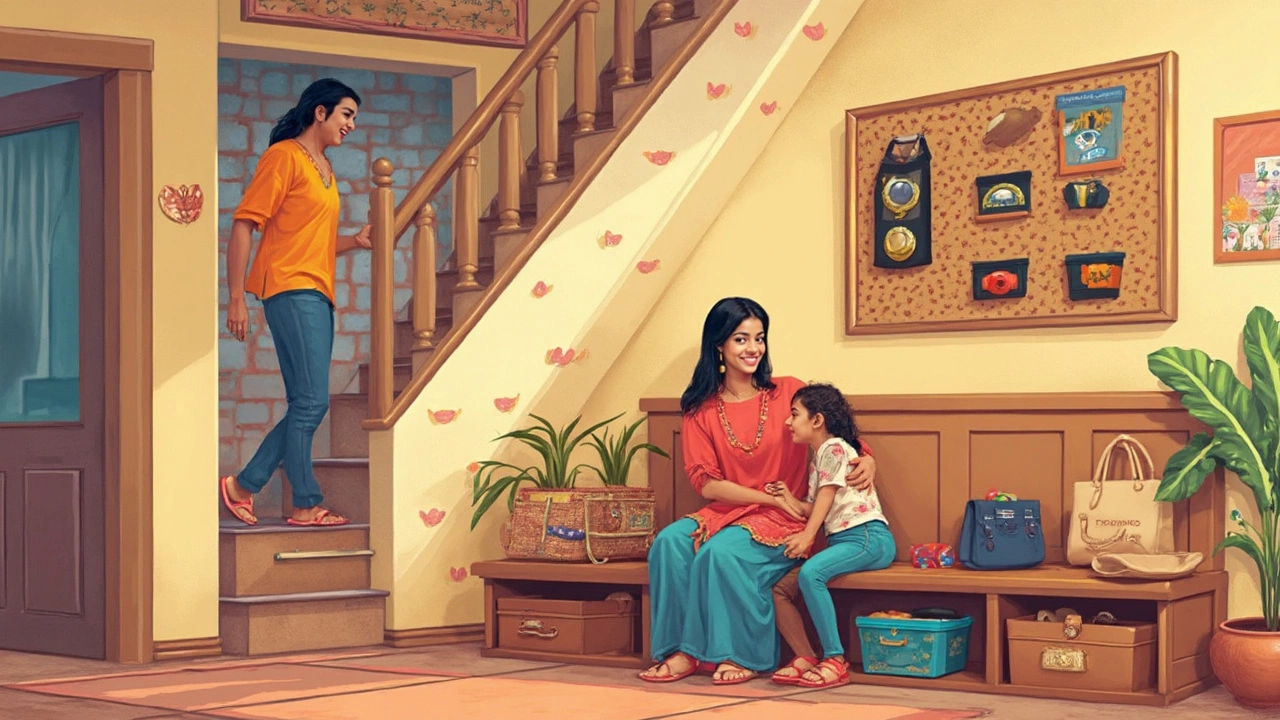
Low-Cost Upgrades and DIY Tips
You don’t need a fancy budget or pro tools to squeeze more storage out of your home. Some of the best upgrades cost less than a Friday night takeout. The trick? Use what you have, get creative, and focus on places that usually get ignored.
Here are some tried-and-true DIY storage projects that just work:
- Over-the-door organizers: These clear pocketed racks are perfect for shoes, snacks, bathroom products, or dog leashes (ask my dog Max, those leashes can take over the whole entryway!). Hang them on bedroom, pantry, or bathroom doors for instant new spots.
- Under-bed bins: Slide rolling plastic totes or shallow boxes under your bed to stash out-of-season clothes, shoes, or even spare towels. Most beds have 6-12 inches of dead space underneath—prime real estate for storage.
- Wall-mounted shelves: Floating shelves or even simple painted planks can turn dead wall space into a spot for books, toys, or spices in the kitchen. Just screw on L-brackets and you’re set.
- Repurpose old containers: Big coffee cans, glass jars, or shoe boxes can keep craft stuff, tech gear, or even screws and nails organized inside drawers or closets. It’s about as cheap as it gets.
If you like stats, here’s something cool: according to a 2022 home organization study by the National Association of Productivity & Organizing Professionals, adding just two storage shelves in an average-size closet can increase usable space by up to 50%. That’s huge if your closet is always stuffed.
| DIY Project | Average Cost (USD) | Time to Complete |
|---|---|---|
| Over-the-door Organizer | $15–$25 | 10 minutes |
| Under-bed Storage Bin | $10–$30 | 15 minutes |
| Wall-mounted Shelf (set of 2) | $25–$40 | 30 minutes |
| Repurposed Box/Jar | Free–$5 | 5 minutes |
Don’t forget closet rods! Install a second rod halfway down to double your hanging space, especially if you mostly wear shorter stuff like shirts and jackets. Or if you’re dealing with a jumble of lids and pans in the kitchen, try a wire rack from the dollar store—suddenly that chaotic cabinet is a home storage solution dream.
Little fixes like this save time, money, and frustration. Give a few a shot and watch how much smoother your daily routine runs when everything finally has a spot.

